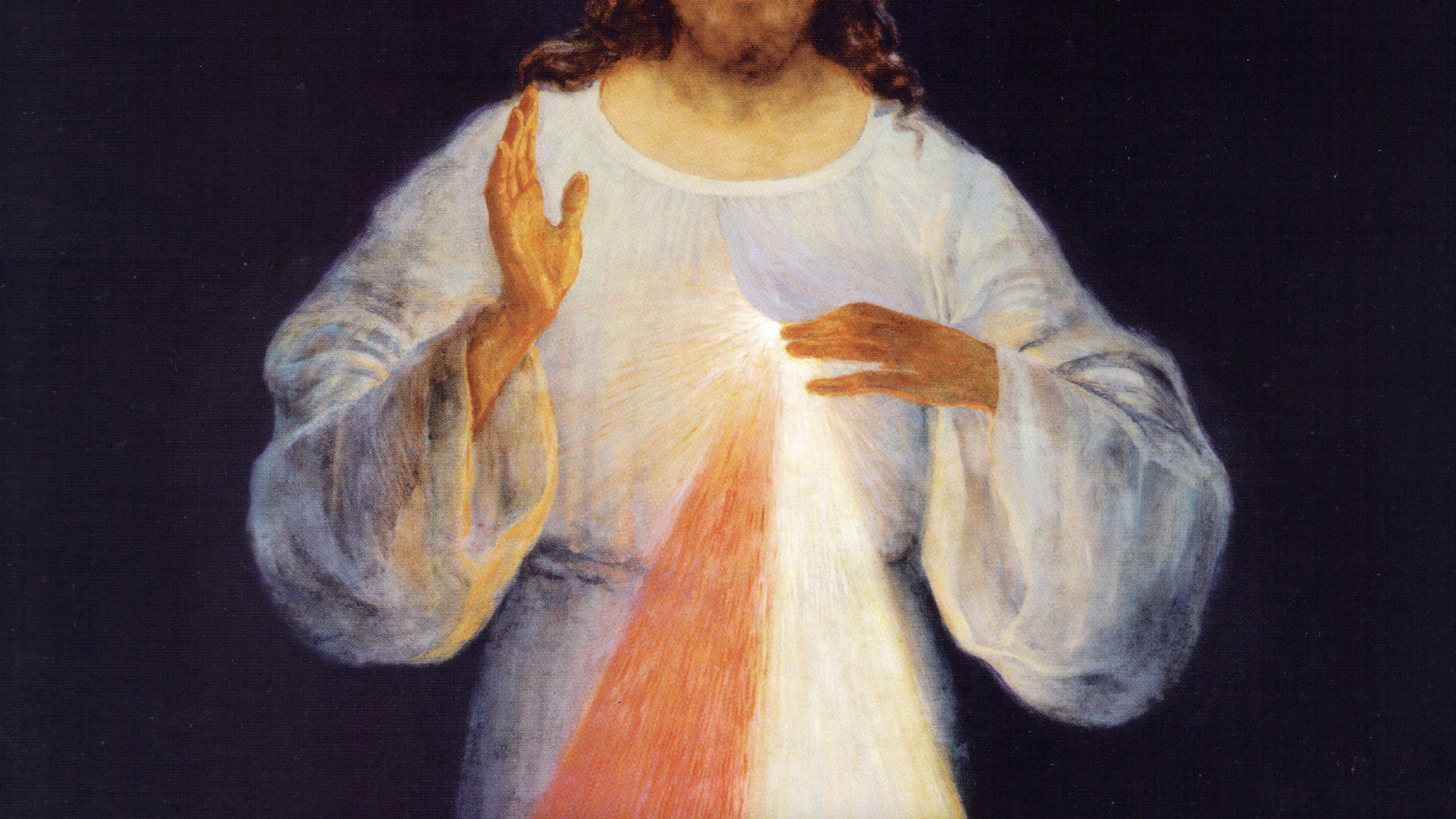This Sunday is the final day of the Easter Octave, named Divine Mercy Sunday by Pope St. John Paul II in 2000, is a “hermeneutical crown” of the eight-day-long celebration of that eighth and final day of creation.
Hermeneutical? The word simply means “interpretive,” or the science of discovering meaning. Hence, I mean that this feast of Mercy really gets to the core of Easter’s true meaning.
Eleison?
Mercy, as I intend it here, is love encountering evil and overcoming it, healing it, redeeming it, and raising out of its ruins, surpassing goods that could never have been apart from these evils. Though God never positively wills an evil, he permits it only in view of the greater goods he might draw from them. And it is mercy that sustains the mysterious logic of the felix culpa, the “happy fault” of Adam that we sing of in the Exultet at the Easter Vigil.
The whole economy of God’s work in Jesus is at heart a work of mercy, with the Passion being the inner core of that heart. In the Resurrection, God the Father accepted his Son’s sacrifice as a new and eternal mode of God’s being God: in the heart of the eternal Trinity is forever the risen Body of Jesus, ever-marked with the signs of the Passion. God now, only and for all ages, relates to creation through the open wounds of the risen Christ.
To me, this is utterly astonishing to ponder: God’s mode of being-God—etched in his flesh—is forged by mercy’s response to human hatred and cruelty. This is the message embedded in the icon of Divine Mercy revealed to St. Faustina Kowalska.
Eucharistic Chaplet
It’s also the meaning of the “Chaplet of Mercy” that St. Faustina received from God in a vision. The Chaplet is an offering of the Slain-Risen Lord to the Father—by his priestly people—asking the Father to be who he has shown himself to be in Christ: Mercy. As such, the Chaplet is an extension of the liturgical-sacramental offering of the same Slain-Risen Lord that is the holy sacrifice of the Mass.
To see this, one need only reflect on the words of Eucharistic Prayer that follow the Consecration: “We, your servants and your holy people, offer to your glorious majesty, from the gifts that you have given us, this pure victim, this holy victim, this spotless victim, the holy Bread of eternal life and the Chalice of everlasting salvation.”
In this sense, I have always found the Chaplet to be a superb way to prepare for, and extend forward, the celebration of the Holy Eucharist into life. It shapes in me a deeper awareness of my sharing in Christ’s royal priesthood through Baptism. This priesthood calls me to—at every moment—offer both my own life as a living sacrifice to God (Rom. 12:1) for the life of the world, and to offer the living sacrifice of Christ himself.
God’s mode of being-God—etched in his flesh—is forged by mercy’s response to human hatred and cruelty.
A number of years ago, this insight—like lightning—flashed in my mind during the per ipsum at Mass. The per ipsum is the moment, at the end of the long Eucharistic prayer after the Consecration, when the priest lifts up the Host and Chalice toward the Father and prays,
Through him, and with him, and in him,
O God, almighty Father,
in the unity of the Holy Spirit,
all glory and honor is yours,
for ever and ever.
On behalf of all and for all, the priest offers up God to God, the Son to the Father, and the faithful, united to the Son in his self-offering, seal their co-offering by a solemn and oath-making “great Amen.” As we were singing thrice the great Amen, I understood with what seemed like absolute clarity this Amen was our co-pronouncing with Christ his tetelestai, consummatum est, “It is finished” (John 19:30). I also saw in that moment that our “Amen” was also our consenting “we are able”:
But Jesus said to them, “You do not know what you are asking. Are you able to drink the cup that I drink, or to be baptized with the baptism with which I am baptized?” And they said to him, “We are able.” And Jesus said to them, “The cup that I drink you will drink; and with the baptism with which I am baptized, you will be baptized.” (Mark 10:38-39)
That “cup” and “baptism” are, of course, references to his Passion.
Amen.
Offerimus
The Chaplet, as a para-liturgical devotion, sustains the moment of our liturgical “great Amen.” It affirms the staggering truth that in Christ we have the authority to—at any moment we choose—apply the infinite treasury of God’s mercy to the world and the sobering truth that we are willing to join Jesus in his self-offering.
Eternal Father, I offer you the Body and Blood, Soul and Divinity of your dearly beloved Son, our Lord Jesus Christ, in atonement for our sins and those of the whole world.
It causes me to tremble. May he who is Risen to forever intercede for us before his Father sustain us daily in fidelity by his grace.
This article was originally published on April 17, 2020 on Evangelization & Culture Online.
